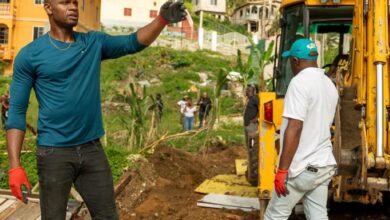Let’s raise awareness about tsunamis and celebrate their day
Since 2015, the United Nations seeks to raise awareness about "the risks posed by tsunamis" with this day

Since 2015, around the world celebrates World Tsunami Awareness Day. This is a date that was approved by the General Assembly of the United Nations with the objective of raising awareness among the world population "about the risks posed by tsunamis". For this reason, and as a response to this natural event that in the last 100 years has caused great damages and losses in many countries around the planet, on November 5 this day is commemorated.
Leer en español: Concienticemos sobre los tsunamis y celebremos su día
In fact, according to the United Nations (UN), "in the last 100 years, 58 tsunamis have claimed more than 260,000 lives, an average of 4600 human losses by disaster, overcoming any other natural risk." So far this century, there have been several tsunamis and among some of the nations that have been hit by this phenomenon is, to give some examples:
-
In 2001, Peru was hit by a tsunami that caused much damage and claimed the lives of several people. According to Info Arequipa, 23 people died and 70 disappeared during this incident. The same media indicates that it also "affected the districts of Ocoña, Quilca, and Matarani, Camaná being hit the hardest".
- In 2004, the Indian Ocean was hit by a deadly tsunami that caused great loss and damage in several countries. "Approximately 227,000 deaths in 14 countries, the most affected were Indonesia, Sri Lanka, India, and Thailand, " says the UN. The international body also explains that this is the one that has killed the most.
-
On more than one occasion, Chile has also been affected by tsunamis. One of them is the earthquake of 2010, which took place at morning hours while everyone was sleeping and which was both destructive and tragic. As El País reports, the tsunami that struck the country as a result of tremor left 156 people dead and 25 missing.
- According to the UN, "the creation of the World Day is an original idea of Japan, which, unfortunately, has been exposed to these disasters repeatedly over the years." In March 2011, for example, the country of the rising sun was rocked by a deadly earthquake and tsunami that left a large number of victims.
-
On several occasions, Indonesia has been a victim of this phenomenon, the most recent being that of September 2018. "This is the sixth fatal tsunami the country has suffered since the great tsunami of 2004 that hit the Indian Ocean. The UN for Disaster Risk Reduction (UNISDR), Indonesia has suffered more deaths from tsunamis than any other country."
It may interest you: This is how the UN seeks to minimize the risks of natural disasters
Reducing disaster risks is one of the goals contemplated by the United Nations Organization in order to avoid losses and save lives, in order to achieve the Sustainable Development Goals. For this reason, this year the international body has decided to join this date with the International Day for Disaster Reduction held on October 13, as well as with the Sendai 7 campaign.
Also, this year they are looking to work on one of the seven goals of the campaign. In 2018 it is the turn of goal c, which refers to "Reduce by 2030 the direct economic losses caused by disasters in relation to the global gross domestic product (GDP)". This is because there is a close relationship between disasters as a result of natural events and economic losses.
Tsunami warning and mitigation programs
Many countries around the world have created programs with which they seek to mitigate the risks of natural disasters, that is, to prevent or reduce the damage that these natural phenomena can cause. Japan, for example, is one of the countries with more experience in "areas such as early warning of tsunamis, public action, and post-disaster reconstruction to reduce future impacts." But what about the Latin American countries?
In Puerto Rico, there is also a tsunami program that seeks, according to its website, "to reduce the impact of tsunamis through disaster assessment, guidance on warning messages and mitigation." Chile, that is one of the Latin countries that has been a victim of these natural events, has also developed programs for this purpose. In fact, on August 1, this nation "was chosen to host the Tsunami Training Program for its experience in warning and mitigation systems," according to Sputnik News.
According to La República, Peru also has a tsunami warning system, called the Tsunami Emergency Alert Radiofusion System. The same media explains that with the Navy it evaluates if there is a threat of the tsunami and the time of impact of the wave. In this case, "this information will be transmitted to the population through televisions with fully digital technology, even if they are turned off".
However, the United Nations Organization recognizes the importance of Member States also raising awareness and informing the population about the risk of tsunamis so that they can be prepared for this type of emergency situations both at the time of the event and afterward of this.
It also recognizes the need for these States to raise, in addition to early warning systems, programs of "recovery, rehabilitation, and reconstruction, to protect the lives of people and prevent the damage caused by tsunamis, as indicated in the Sendai Framework. for Disaster Risk Reduction 2015-2030 ", as explained by the international organization in a document.
LatinAmerican Post | Diana Rojas Leal
Translated from "Concienticemos sobre los tsunamis y celebremos su día"
Listen this article





